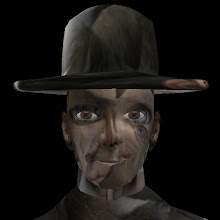The Graphics course that I teach on is very broad. My students are studying all sorts of stuff. Animation, kinetic typography, editorial illustration, scriptwriting, design for print, documentary making, printmaking, interactive media and everything in between. One of the reasons the instructivist approach doesn't work on our course is because a traditional lecture on anything subject will only be relevant and useful for a handful of the audience. We don't really have one course, but lots and lots of mini courses, each relevant to an individual student. How do we manage this potential anarchy? We use something we call a Learning Agreement. This is a document that each student produces that documents their progress, allows them to reflect on, negotiate and plan their learning, and enables them to explore the underlying theories related to their practice. In level 3 it combines aspects of a dissertation with elements of a personal and professional development document, and is central to the assessment of work. It acts not only as support for the development of learning, but also provides the window that we view the work when we assess it. We have become more and more adventurous in what we permit this document to be, with students making films and producing image based Learning Agreements. It personalises learning in a structured and coherent way, and when it works well, it is hugely effective and popular with staff, students and external examiners. The Learning Agreement is introduced towards the end of level 1, developed in level 2, and is central to everything in level 3.
As we are running the first pilot at the end of level 1, it would make sense to link it in with the learning agreement. If the brief for the A&D pilot asked the participating students to create content based on the work that they have produced so far in their first year, and then asked them to arranged this work in the 3D space in a meaningful way, then got them to add more content to connect the work together, investigate any areas that were unclear and create new content to add to the sculpture, then that would be very useful.
They would effectively be creating a 3D learning agreement.
The other possibility here would be for students to make links between their individual 3D learning agreements, to create a collaborative 3D map of the collective knowledge that had been gained in the first year of the course.
Sunday, 27 January 2008
Subscribe to:
Post Comments (Atom)

No comments:
Post a Comment